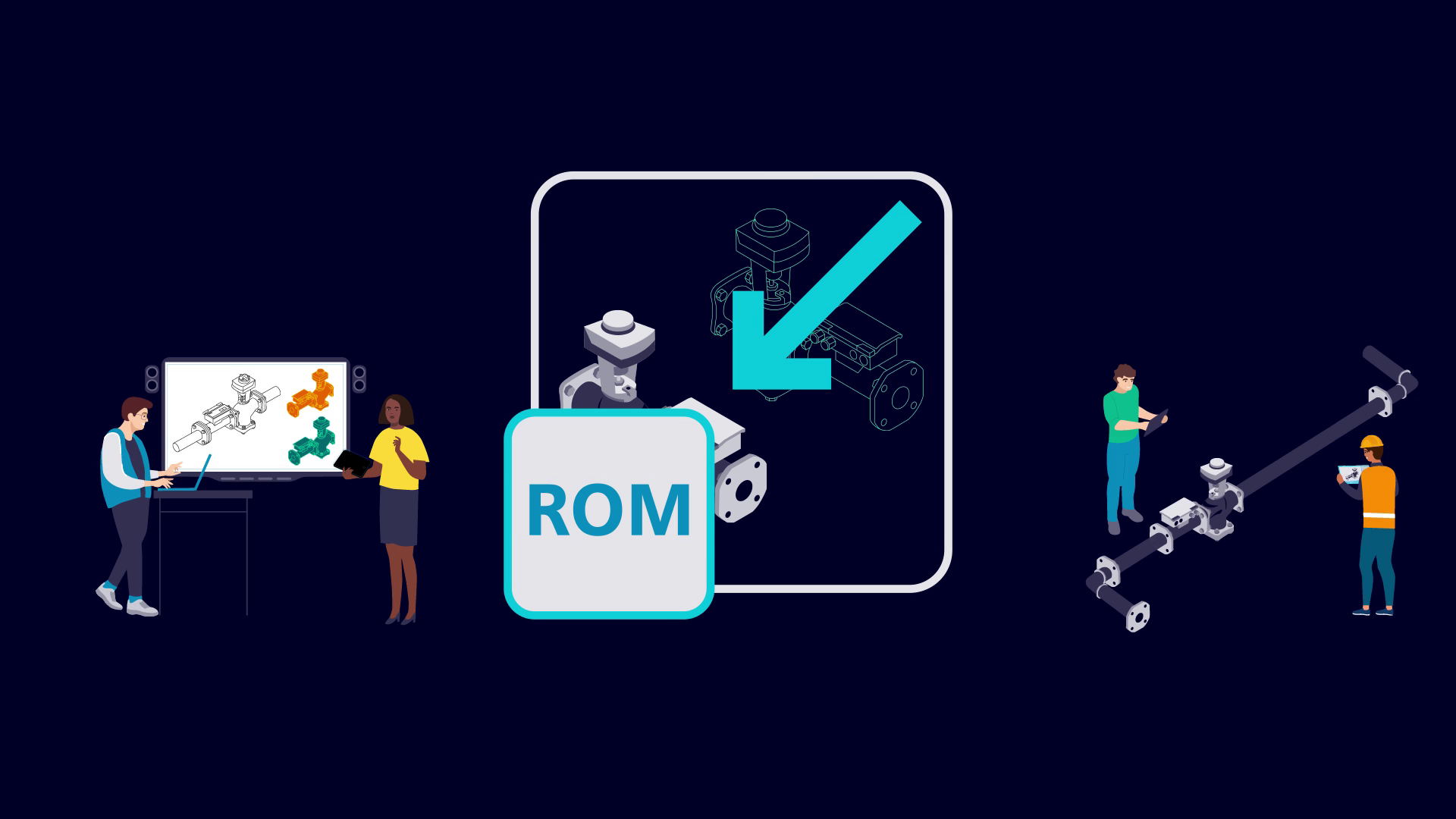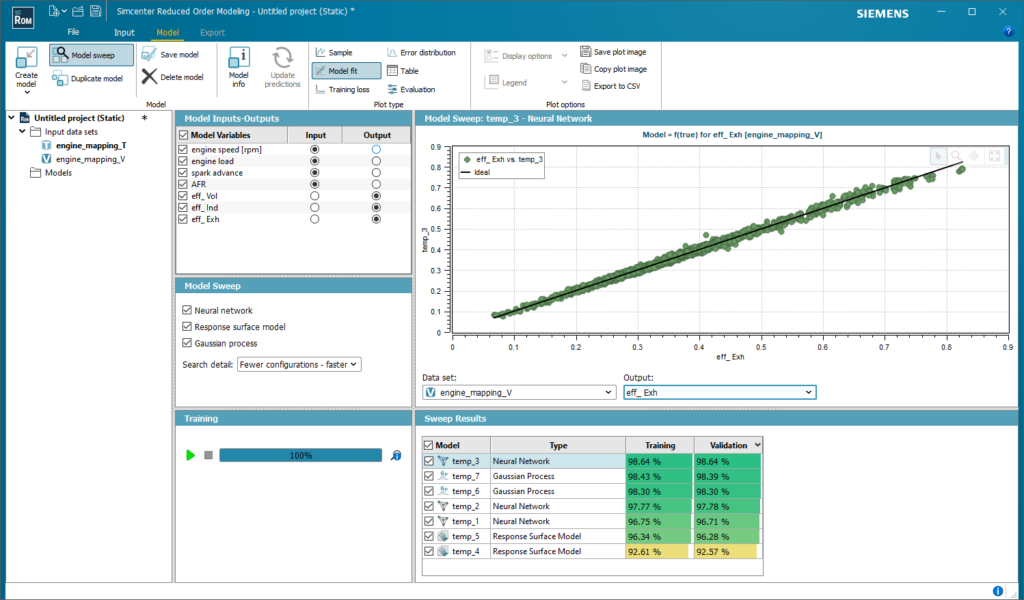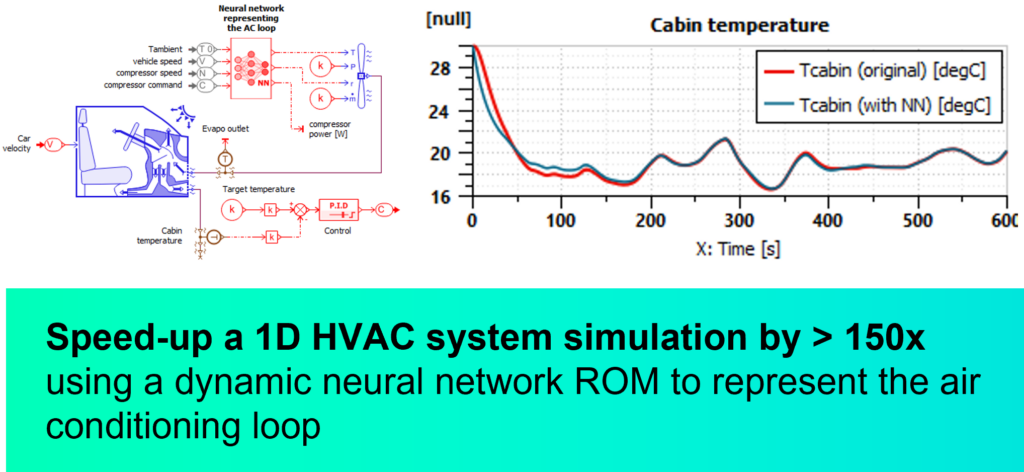Introducing Simcenter Reduced Order Modeling

It’s no exaggeration to say that digital twin models have revolutionized the way we design products and processes today. Analysis in the virtual world of CAD and CAE has given designers much greater insight into the way things work and how to find better solutions to design challenges.
But high fidelity CAE simulation is an expert domain, and although those simulations might contain highly valuable intelligence about product performance that could be really useful upstream or downstream of that detailed design step, the models generally end up in the corner of a filesystem, gathering virtual dust.
Time to turbocharge your simulation and test data
Model order reduction, the process of creating a reduced order model, or ROM, is a way of turning performance data obtained through a simulation or test campaign into a super-fast prediction machine. You put parameter in one side and get instant performance metrics out the other.
The neat thing about a ROM is that it is conveniently packaged in such a way as it can be dropped into another simulation model or workflow to serve as a very fast running surrogate of a larger model, or it can be shared with colleagues, suppliers or customers for easy execution in a different context.
Simcenter Reduced Order Modeling is for everyone
Model order reduction (MOR) is an active area of research in industry and academia, with a continually advancing state-of-the-art. One of the fundamental aims of Simcenter Reduced Order Modeling is to make that valuable technology accessible and useful for a broad engineering audience. It offers a robust wizard for ROM creation, taking you through the process of importing data, selecting, training, and validating a model, and exporting in the format you need. All delivered through an easy to use, no-code interface.
Simcenter Reduced Order Modeling includes carefully selected MOR methods which are well suited to CAE applications, from linear algebra to control theory, neural networks, artificial intelligence (AI) and machine learning (ML). How are you supposed to choose? The tool also helps with that, with a powerful ‘model sweep’ option which trains multiple models for you and guides you through their suitability using a range of performance metrics.

Model order reduction in Simcenter – an evolutionary journey
Originally developed as an add-on for systems simulation and design exploration (you may be familiar with Simcenter ROM Builder in the context of Simcenter Amesim or HEEDS), the reduced order modeling technology in Simcenter has grown significantly over recent months and years. So significantly, in fact, that its applicability is now far beyond the domains of systems simulation models or facilitating faster design exploration studies. Many of the new capabilities are geared towards leveraging ROM with 3D CAE methods like CFD.
ROM toolbox for Simcenter
Simcenter Reduced Order Modeling is an extension of the Simcenter Portfolio, enabling ROM creation from any simulation or data source. It can be connected to fluids and thermal, mechanical, systems or physical test. Or anywhere else, for that matter.

Interested to know more?
Why not dive into an application case study? This blog follows the process of reducing model complexity of a power transformer and transmission line in an electric power system.
Or get in touch with your sales or support representative today to find out how to try it out and see what additional value you can get from your digital twin models and datasets.
For more information, check out the Simcenter Reduced Order Modeling webpage and the official announcement.


